Intro
This build has been on my list since the beginning of the year. I wanted a fast 4" sub 250g build with HD recording. Goal was set at 170g
Ok so this has been an unpublished draft for a few months now. I finally decided to publish it.
Quad was flying pretty well but I smashed it face forward into a tree trunk after the 5th powerloop in a row, causing one sideplate to pop out and some what looks like internal delamination.
I'll rebuild it so decided to post this report as is now :)
Build & Challenges
The Stack
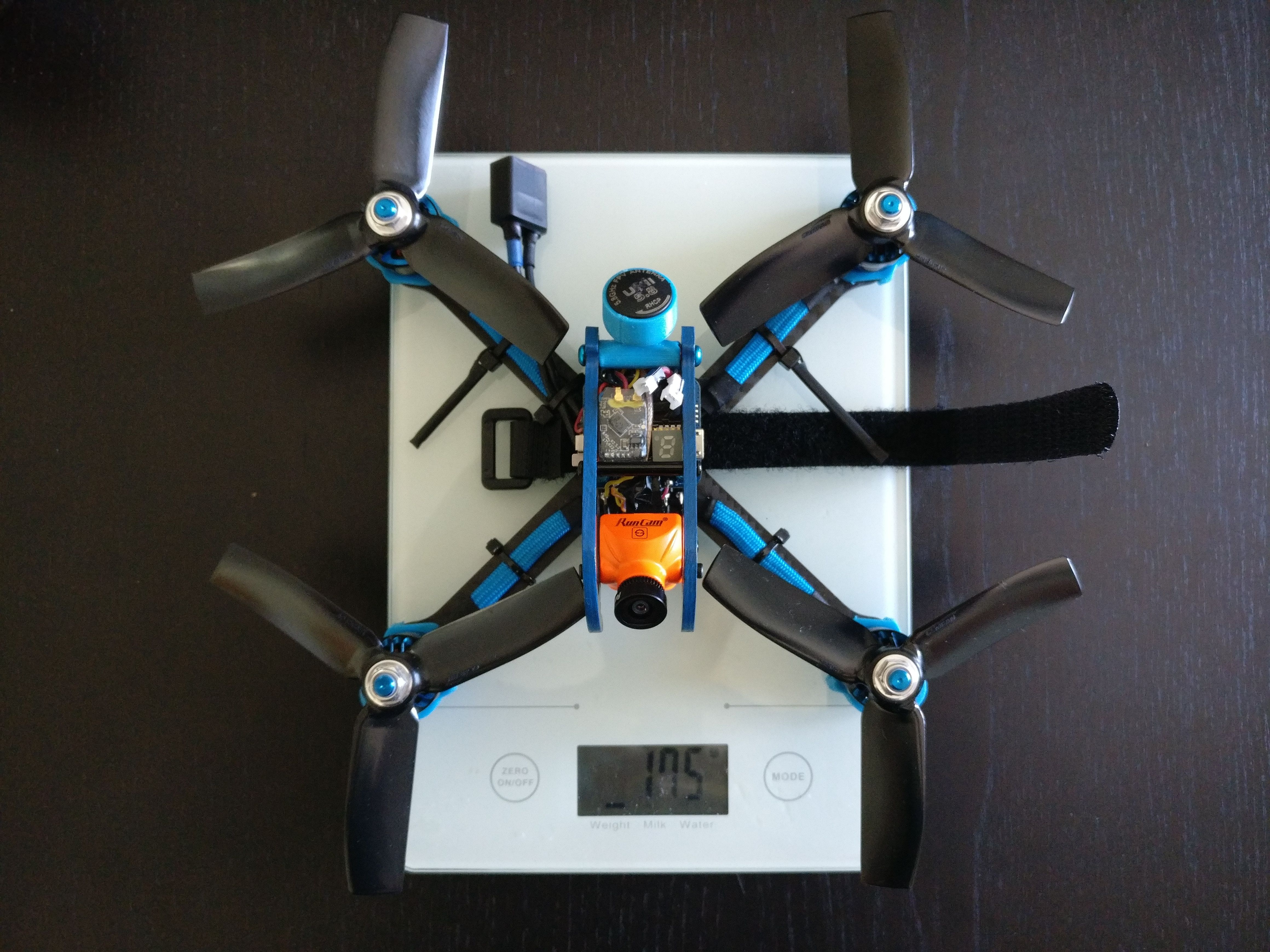
If you want to fit a full stack + split mini into this frame the space is very tight.
The redesigned side plates give more clearance but it still requires careful planning.
I used M2 steel screws running through the whole stack. With TPU printed soft mounts standoff/sleeves and 4 of the brass standoffs between the split mini boards as well as regular nylon standoffs between the hglrc esc/fc.
Custom TPU softmount standoffs ended up being 4mm and 3.5mm in height.
VTX03
Originally I really wanted to use a HGLRC TX20 but I couldn't get it to fit well. It is too wide to fit between the sides and the stack height was already maxed out.
On my next build I might go for a unify nano which would fit very well and provide smartaudio as well as compliance with the rules for a lot of official races (not like I have been to one yet but you got to be prepared :)
Anyway I ended up going with a trusty VTX03 mounted ontop of the split with VHB tape.
I am gonna switch it out for a vtx03s on a rebuild tho.
R-XSR and F.Port
Before doing anything I flashed the R-XSR with the latest f.port enabled firmware via my q x7.
I removed the cable port from the r-xsr to make it lower profile (basically just cutting it off) and direct soldered 5V/GND from the VTX03 to it.
F.Port requires the uninverted S.Port signal so the signal wire goes there (connected to TX6 on the FC).
Heatshrink over it to protect it a some more.
Powering the receiver from the VTX frees up a 5v/gnd pad for other things on the fc and cuts down on wires if you plan to run them close by.
Receiver is installed with the antenna side facing the back of the quad in order to route the antennas cleanly down to the rear arms and keeping them sort of away from the vtx antenna port (might reduce interference, not sure?).
Mounted on top of the vtx again with VHB tape.
GPS
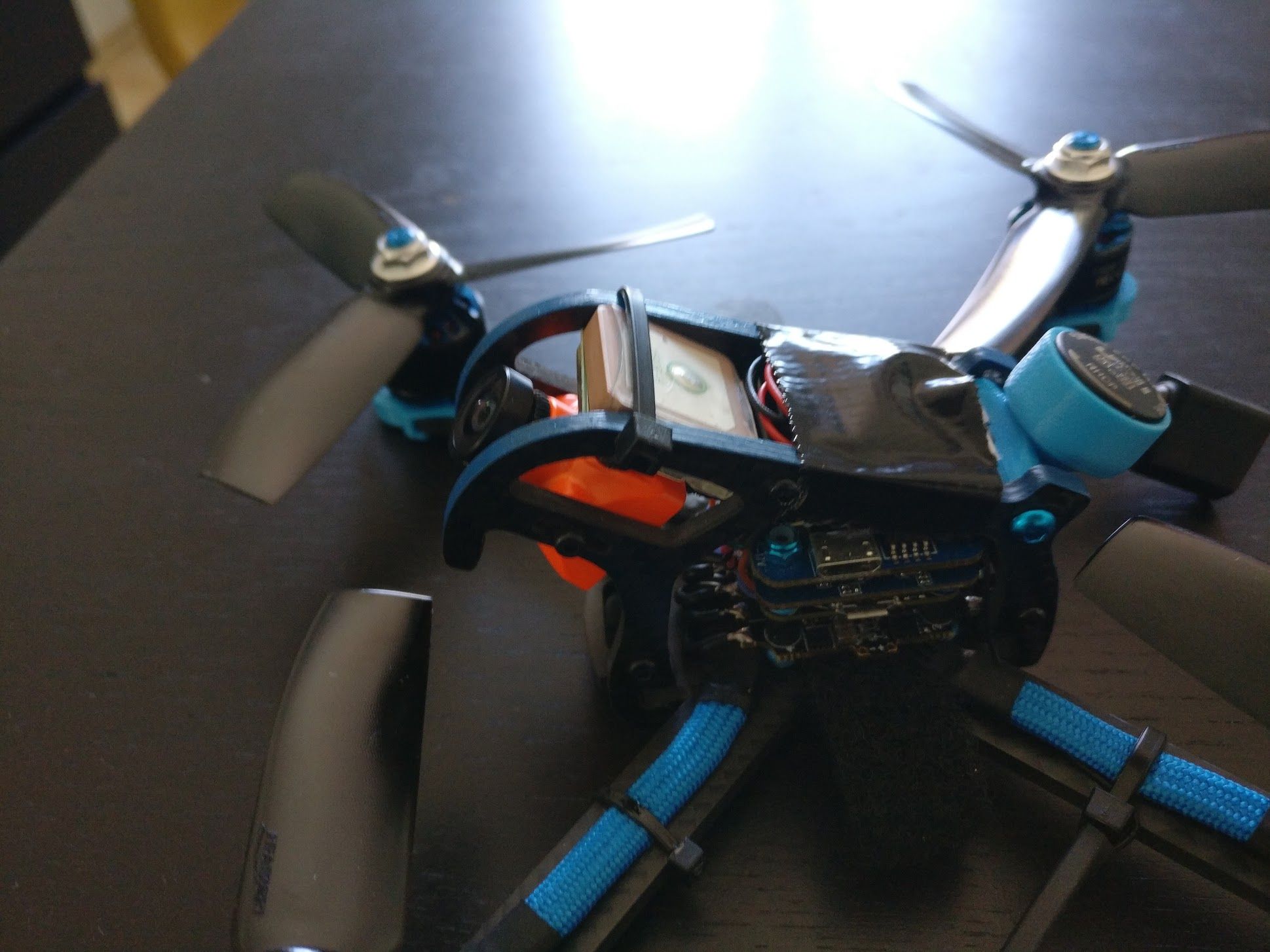
I normally don't fly with GPS but I like to do some speed runs on new builds to get some recording regarding topspeed.
Originally I planned to squeeze the GPS receiver between the frame sides like in the following picture, however I wasn't able to get a lock on satellites that way - not sure if because of the carbon or some interference with the vtx or some other parts of the build.
I then attached it on top with 2 zip ties and that worked reasonably well.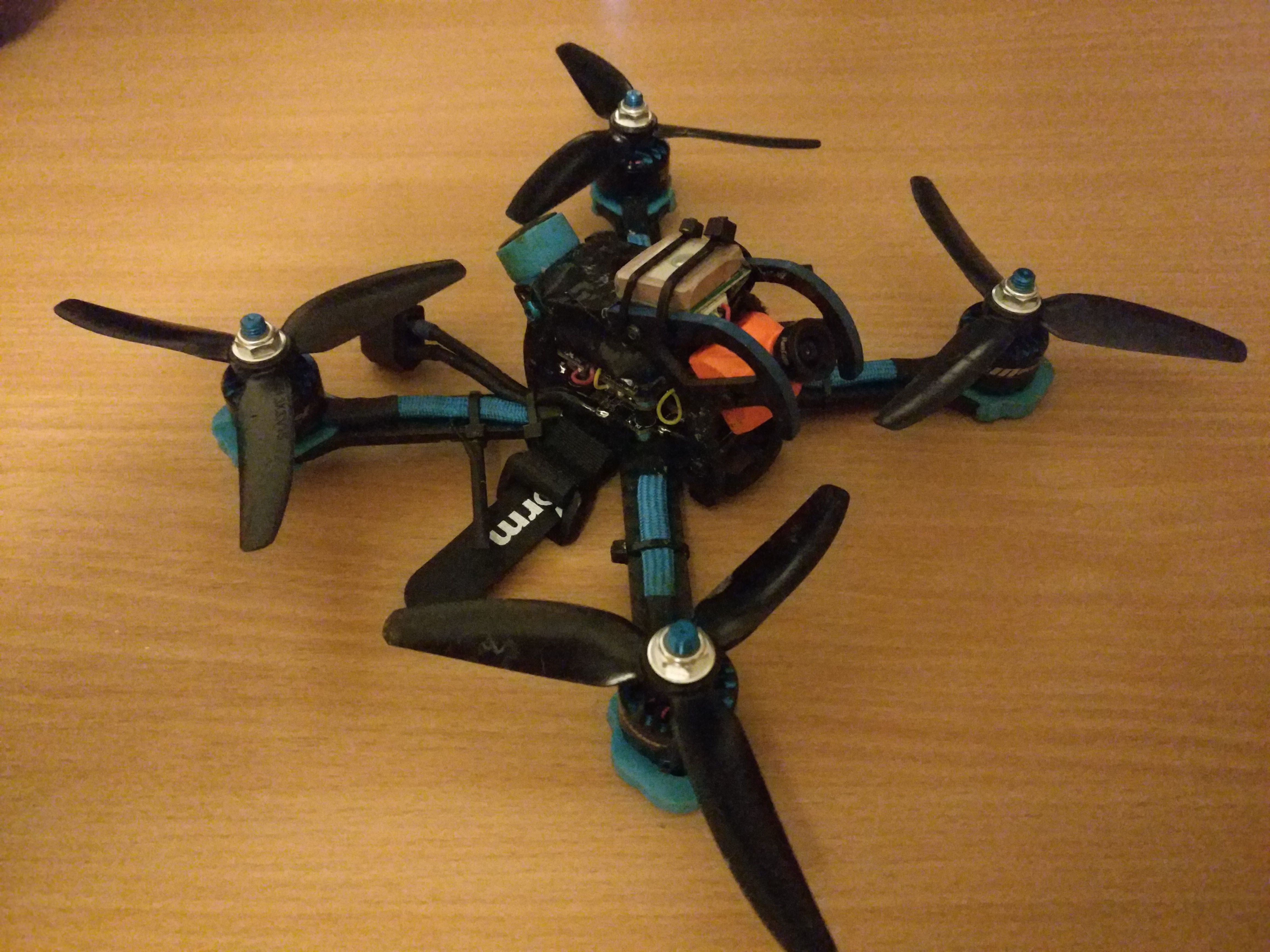
Runcam Split Mini
The camera ribbon cable
With the splits ribbon cable 2 things need to be considered.
As I run the ribbon cable under the vtx, depending on the angle the vtx pcb might rub against the ribbon cable potentially damaging/scratching it - I added some tape around those places to avoid this.
Securing the connection
Based on my last build the br2.5 LINK I knew that making sure the stack and camera cable is secured well is critical.
If the connection between camera cable and the board gets loose the camera likes to freeze up midflight.
As per runcams suggestion for the older split I placed 2 strips of tape over the cable part that is held down by the metal bracket.
We will see how well that works but so far no problems.
For the stack i secured it with m2 nyloc nuts on one side and regular nylon nuts on the other, height was a concern and the higher nyloc nuts would have touched the frame.
Softserial and Betaflight stick control
Being able to turn the recording on/off via your transmitter is a super useful feature.
Sadly turning recording on/off with the current version of betaflight (3.3.2) will cause the escs to reboot ( Bug report ). Runcam acknowledged the issue and they are working on a fix for it.
I wanted to reserve UART3 on the back of the board for the optional GPS pigtail and since I was using f.port occupying TX6 I went for a soft serial uart for the split - figuring I will trigger it before taking off and then the CPU won't be very busy with communication on that line (not sure if it works like that tho - just a guess).
~~The split mini however did not react to the record on/off command when hooked up via soft serial however the ESCs do reboot (although with every stick flick as opposed to only the first when hooked up via a regular UART).
Turns out I had the resource mapping wrong. I used LED 1 instead of LED_STRIP for initially and that threw me off.
resource SERIAL_TX 11 A01
resource SERIAL_RX 11 B14
Post-Maiden & Problems/Fixes
Lipo Pigtail
I originally used 18 AWG for the lipo pigtail but that caused voltage sag - switching to 16 AWG solved that.
Props
As you can see on the pics at first I only had some bullnose GF props I bought for like 0.01$ at a hobbyking sale, those were ok but a couple days later I got the highly praised HQ 4x4.3x3 V1S props which were much better.
I did try some 3.5" bi-blades too, although very fast they were quite noisy so I only flew one pack.
Loose IR Filter
The IR filter came off the lens during the 6th pack and suddenly everything was pink. Not cool. I haven't had any crashes yet and it looked like the glue on the filter simply wasn't cured properly as it was still gooey when I fished the filter out of the cam.
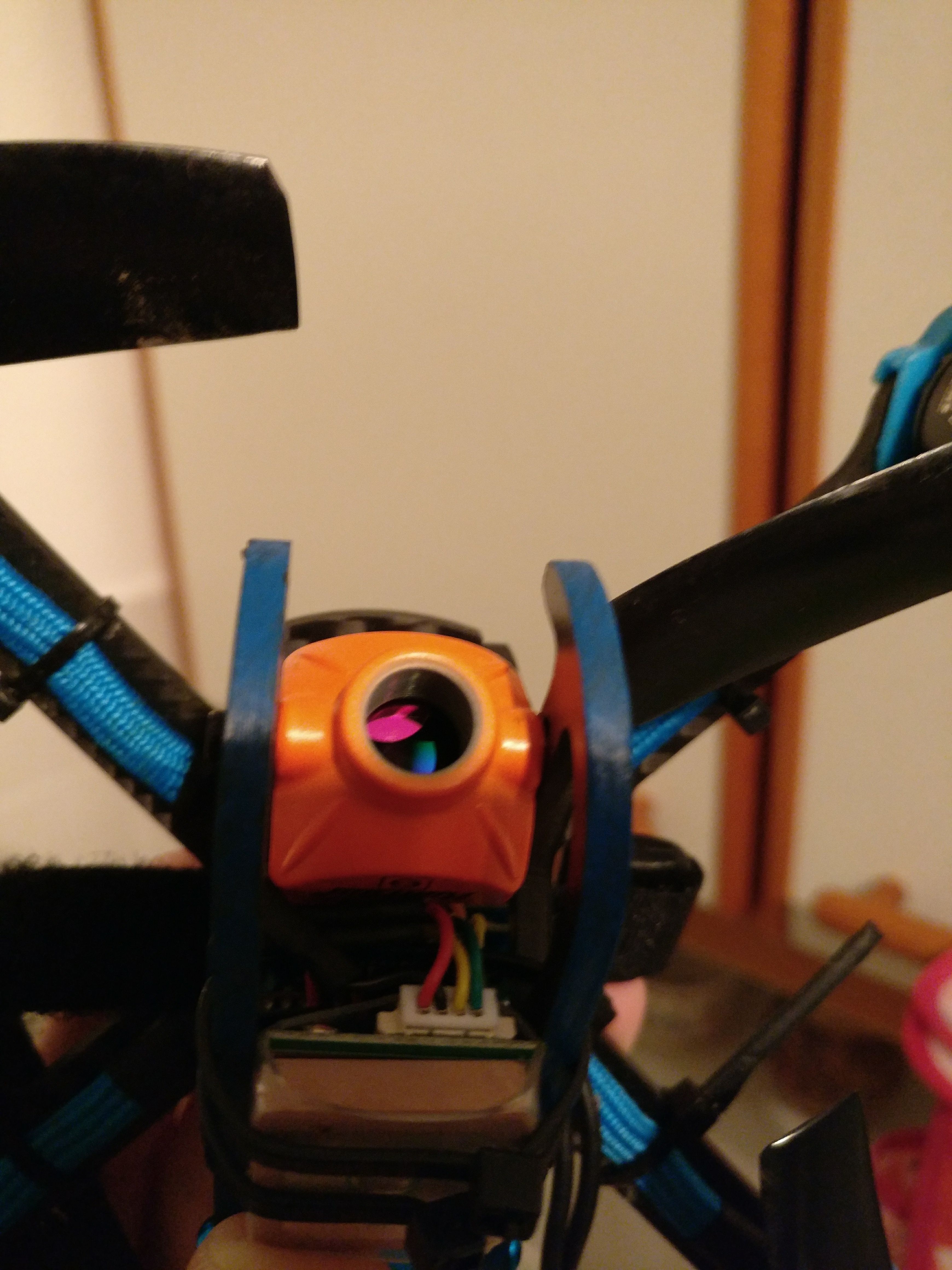
I wrote runcam with some photos and video attached and they replied on the next day, being very sorry and offering me to send a replacement lens right away. Good customer service here and I haven't had any such issues on my other split mini that I crashed multiple times into gates and what not.
Speed results
I got about 130 km/h topspeed easily and around 150 km/h when going full throttle and then tilting the quad back to reduce air drag.
Drag at this size does become an issue especially if flying at around 50-60° cam tilt.
Speed was meassured via GPS and should be pretty accurate thanks to the doppler effect.
I am satisfied :D
Photos
Part List
Show stores (5)Guides & Reviews
AirbladeUAV has done it again and this time they've brought long range to the 5" class! Based on the popular Transformer Mini, the new Transformer 5" Ultralight adopts a lot of the same design philosophies with larger props and more payload capacity. It can fly upwards of 20 minutes on a 4 cell Li-Ion battery pack and in ideal conditions it's got a range of over 4 to 5 miles. In this guide I'll walk..
Read moreWith the release of the DJI FPV Drone cinematic FPV has become a lot more accessible, but you certainly don't want to crash a $750 drone! The QAV-CINE Freybott is a compact, lightweight cinematic FPV drone that can take a hit and keep going. It's a lot safer to fly indoors and around people. With a naked GoPro or the SMO 4k you can capture some great stabilized footage. In this guide I'll show you..
Read more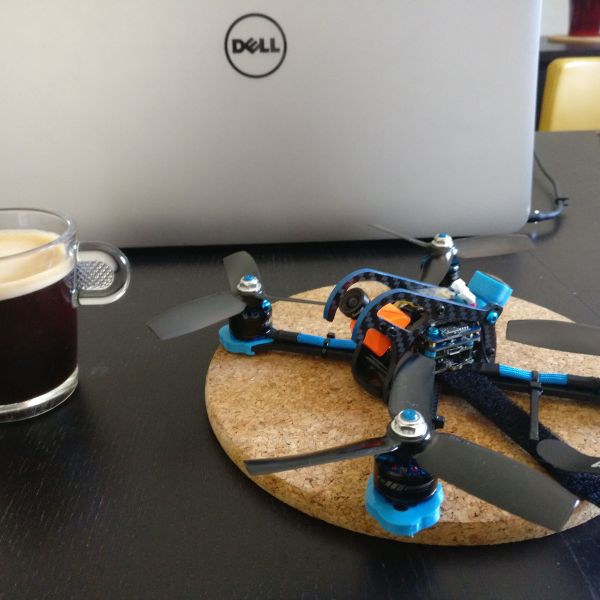
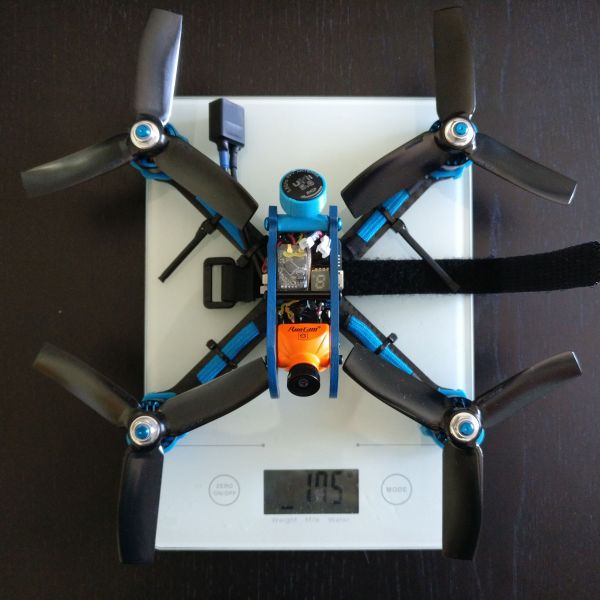
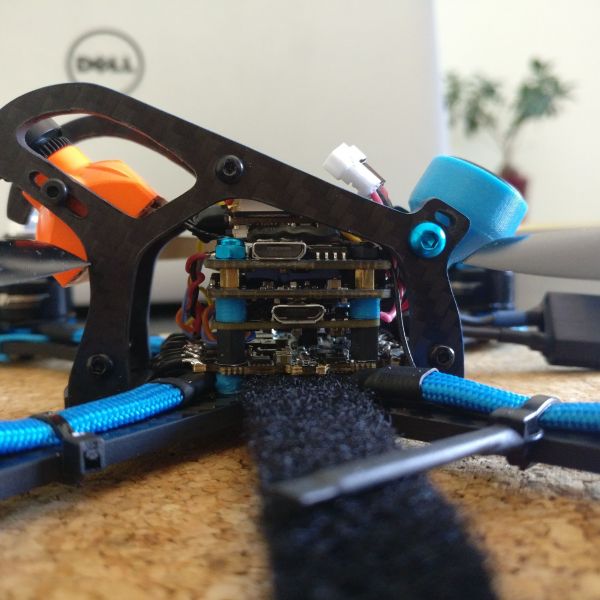
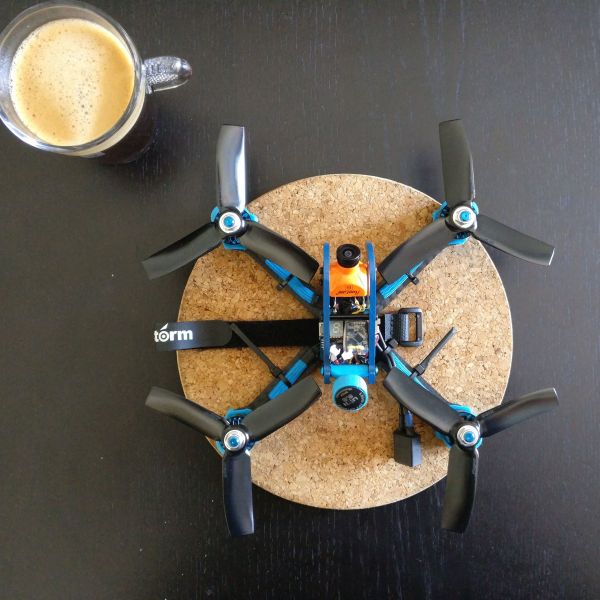
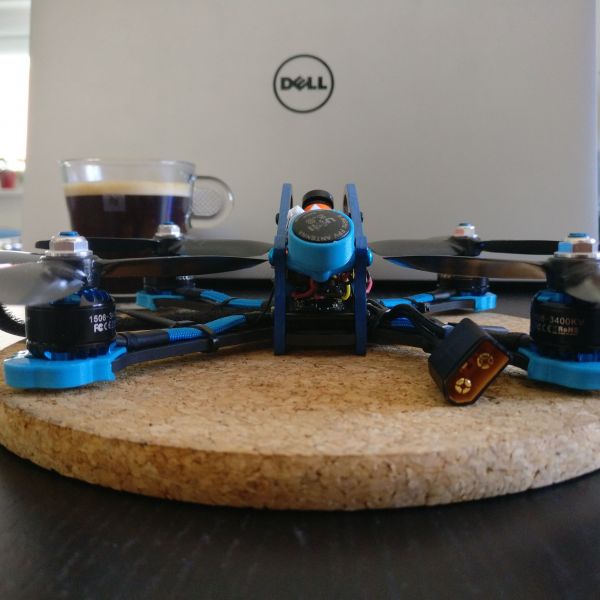
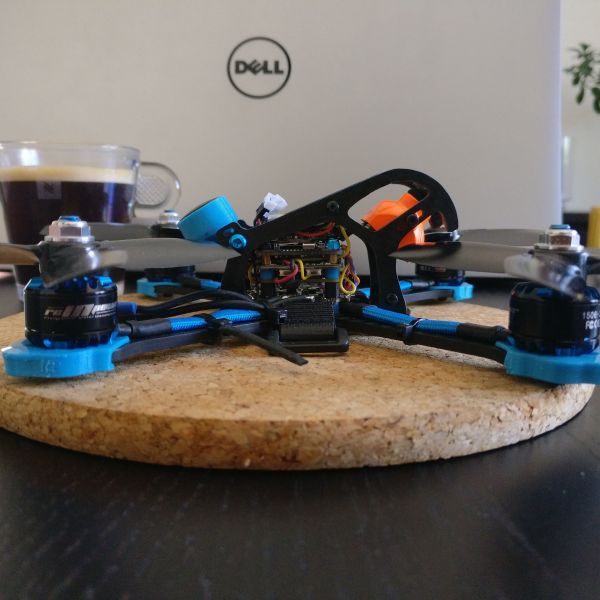
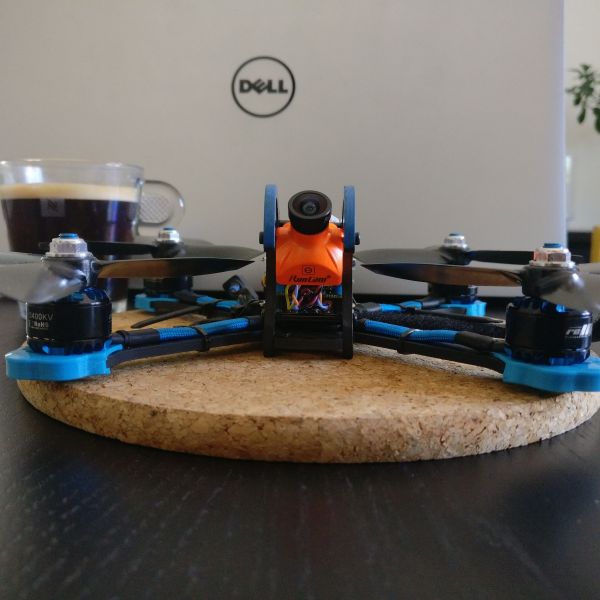

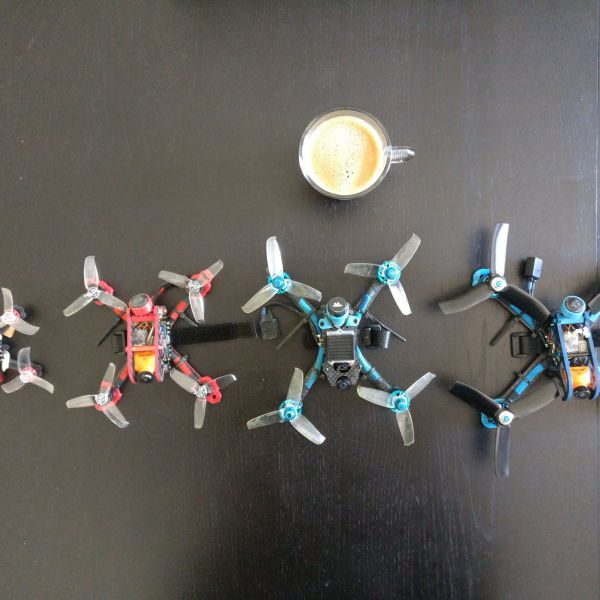
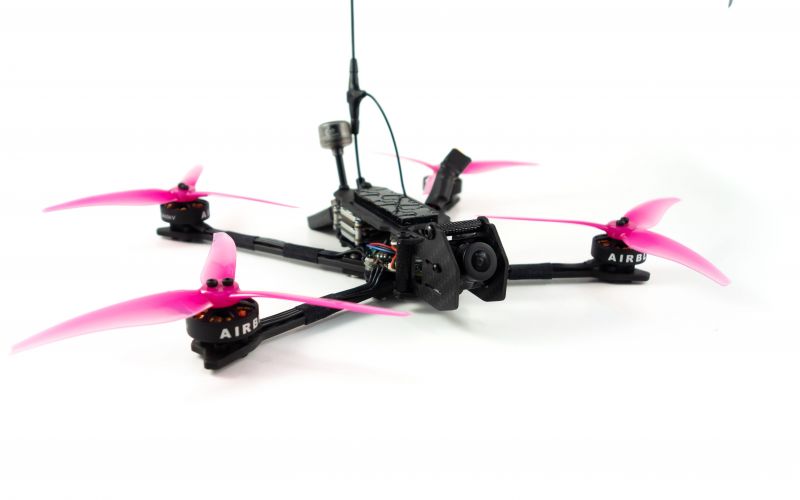
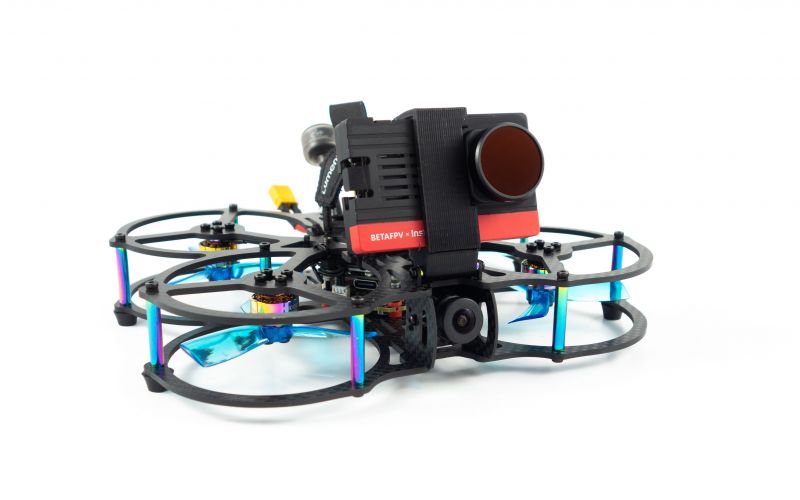








New Message for ghostface